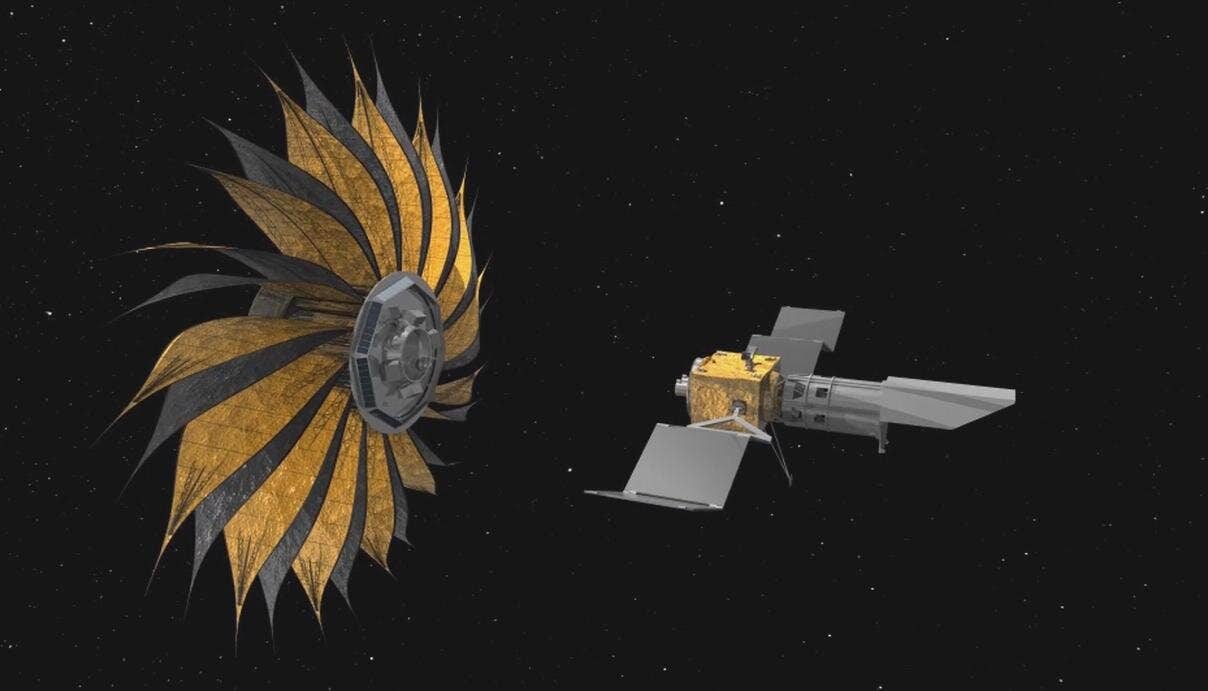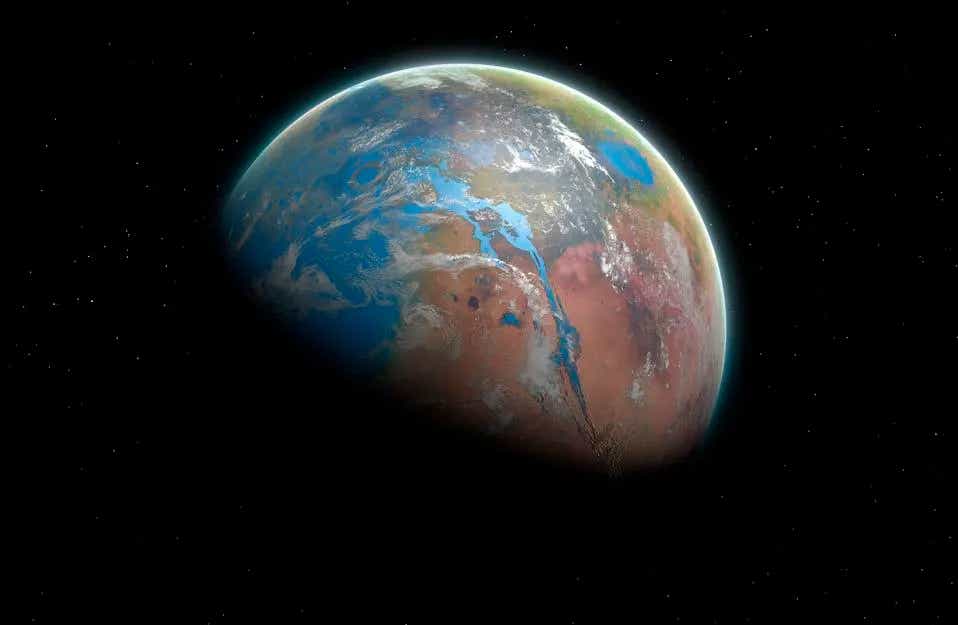Ground-based observatories could use starshades to see distant planets
How do we find Earth-like planets outside our solar system? Send a giant structure that blocks starlight so that astronomers can see further

[Sept 9, 2021: Paul M. Sutter, Universe Today]
Starshade Artist's Concept 2 -- How do we find Earth-like planets outside our solar system? One idea is to send a giant structure that blocks starlight so that astronomers can more easily detect orbiting planets. This artist's rendering shows the proposed starshade concept flying in sync with a space telescope. The giant sunflower-like structure would be used to acquire images of Earth-like rocky planets around nearby stars. The proposed starshade could launch together with a telescope. Once in space, it would separate from the rocket and telescope, unfurl its petals, then move into position to block the light of stars. (Credit: NASA/JPL)
All hail the occulter: an orbiting starshade for ground-based telescopes.
Ground-based telescopes and orbiting observatories have revealed thousands of exoplanets orbiting other stars. And while the techniques used by those instruments have proven to be incredibly powerful in discovery, they are decidedly less capable in characterization. That's because most exoplanet-hunting techniques rely on indirect measurements of the existence of an exoplanet—they look for dips in the brightness of a parent star or slight wobbles in its position.
Those techniques only give us extremely limited information about what those exoplanets are really like. We have to make educated guesses as to their compositions. But astronomy is just like anything else: a picture is worth a thousand words. An image of an exoplanet provides extremely rich detail that simply cannot be gained from other techniques. But to take a picture of an exoplanet you have to contend with the overwhelming brightness of its parent star.
The most common method to deal with this interference is through a coronagraph, which is a device inside a telescope that blocks out the light of the star. If the orbiting planet is big enough and bright enough (usually in the infrared due to its own heat emission), we can get a direct picture. But this method has only delivered a handful of direct images.
What would it take to image Earth-like planets around sun-like stars? That is the question pondered in a recent paper appearing on the preprint journal arXiv.
To do that, you need a truly giant telescope, much bigger than the ones we can loft into space. And to get enough contrast, you need an equally massive coronagraph. One so big that it couldn't fit within the telescope itself. In other words, you need starshades that are aimed at the ground: an occulter.
The idea is put an occulter in orbit around the Earth. If you tune its orbit precisely, it would periodically pass over a giant observatory, like the European Extremely Large Telescope. With exactly the right alignment, the occulter would block the light of a target star, allowing the telescope to directly image any orbiting planets.
While this setup wouldn't provide as much continuous observing time as space-based arrangements, it would leverage the massive observing power of ground-based telescopes, which just might make the tradeoff worth it.
The starshades wouldn't need to be all that big—80 to 100 meters across. While we don't have anything like that in space currently, the development of lightsail technology would provide the perfect platform for deploying something like this in the near future.
Like these kind of feel good stories? Get the Brighter Side of News' newsletter.
Tags: #New_Discoveries, #Space, #Telescopes, #Planets, #Starshades, #Observatories, #Research, #Astronomy, #The_Brighter_Side_of_News
Joshua Shavit
Science & Technology Writer | AI and Robotics Reporter
Joshua Shavit is a Los Angeles-based science and technology writer with a passion for exploring the breakthroughs shaping the future. As a contributor to The Brighter Side of News, he focuses on positive and transformative advancements in AI, technology, physics, engineering, robotics and space science. Joshua is currently working towards a Bachelor of Science in Business Administration at the University of California, Berkeley. He combines his academic background with a talent for storytelling, making complex scientific discoveries engaging and accessible. His work highlights the innovators behind the ideas, bringing readers closer to the people driving progress.



